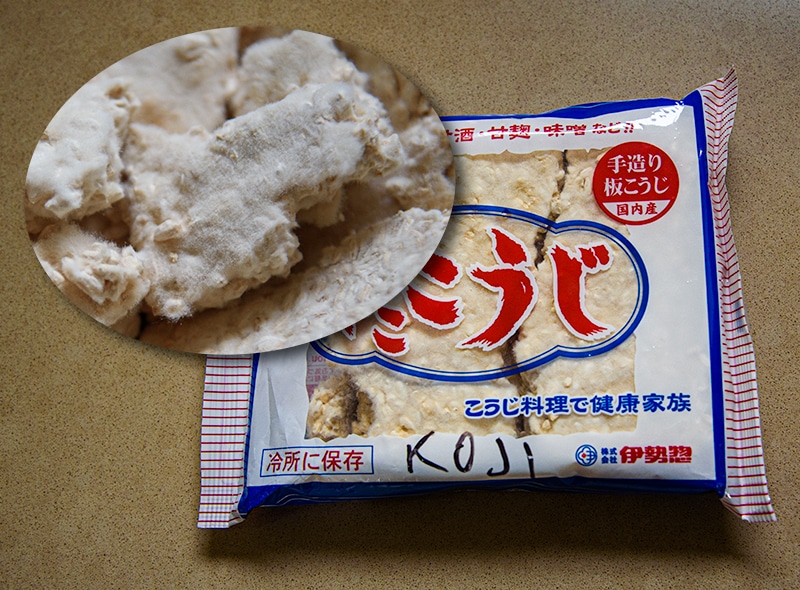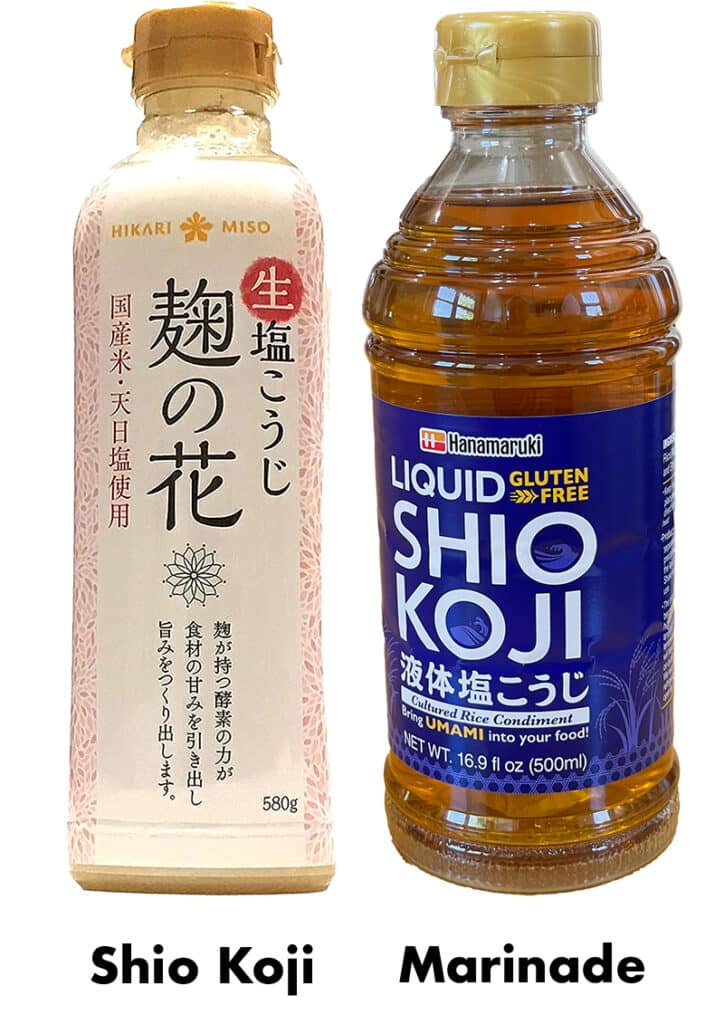This recipe is excerpted from the book “The Meathead Method”
Koji is a fungus, Aspergillus oryzae. It is used in making sake, miso, tamari, soy sauce, bean pastes, and even some yogurts. It can be used on meats, vegetables, and even butter with exquisite results. Its enzymes can transform a wide range of foods, both meats and vegetables. There is a recipe for Shio Koki Butter here.
Eewwww gross. Fungus on my food? Never fear. Mushrooms are a fungus, and most cheeses are the result of fungi, and yeast is a fungus so without fungi, no wine or beer. Wine lovers know about the botrytis cinerea, the “noble rot,” a mold that attacks ripe grapes dehydrating them and shriveling them, and concentrating their sweetness so the resulting wines are luscious unparalleled unctuous expensive nectar. French Sauternes and German Beerenauslese are brilliant examples.
It is an enzymatic Swiss Army knife. Its enzymes slice up proteins (proteases) to make umami-laden amino acids as well as enzymes that slice up starches (amylases) into sugars. Enzymes tenderize and flavorize. This is similar to the process of aging meat. Similar but not identical. Many chefs say the taste is similar to dry aging. Sometimes yes, sometimes no.
When dry aging beef, enzymes work slowly to break proteins into smaller parts creating new and complex flavors. The abundant enzymes in koji work faster and the salt does its magic.,
There is one major advantage over dry aging: Yield. A lot of water and weight is lost in dry aging. Not so with koji accelerated process. It also works a lot faster. There are two forms of it that you can play with: Koji rice and shio koji. Don’t mess with kan koji, spores, powders, paste, or liquids. I recommend you use only Shio Koji.
A word of caution: Koji has sugars in it and if you use it on chicken skin or turkey, for instance, they will burn if you don’t keep an eye on them.
Koji Rice
Koji Rice (a.k.a. miyako koji) is cooked rice that has been inoculated with spores of Aspergillus oryzae, incubated, and then dried. It will keep for months in your pantry. When buying Koji Rice, the ingredients list should say “rice and Aspergillus oryzae” and nothing more. Some cooks simply coat meat with the rice lay it on a wire rack in the fridge for 3 to 7 days, and the wet meat gets the mold to grow.

Others grind up Koji Rice (wear your COVID mask), spread it on a steak or chop, and put it on a wire rack in the fridge for 3 to 7 days, the fungus grows, and magic happens. I occasionally buy Miyako brand Koji Rice.
The better strategy is to make Shio Koji from koji rice, or buy Shio Koji Paste or Shio Koji Liquid.
Shio Koji Paste
Shio Koji Paste is a goopy white porridge-like umami bomb marinade made from Koji Rice, water, and salt (shio). You can buy Hakiri brand and others pre-made.

But it is easy and cheaper to make it yourself. It will keep in the fridge for months. Because the fungus has grown in the liquid, it takes less time to work its magic on meat than dry koji rice. A few tablespoons added to a zipper bag of chicken or pork and refrigerated overnight is surprisingly good. For seafood, just a few hours is all you need.
To make Shio Koji Paste mix 1 part koji rice by weight, 1 part water by weight, and 6% of the water weight in salt. In other words, we are making a 6% brine and mixing it with an equal amount of Koji Rice. You can use any salt because we are measuring by weight and all salts have the same amount of sodium chloride by weight. The recipe is below.
Shio Koji Liquid
The easiest method is to buy Shio Koji liquid. Loaded with enzymes, it is simply Shio Koji Paste that has been pressed and filtered. It is the color of apple juice I buy Hanamaruki brand on Amazon.

Add two tablespoons to a couple of chicken thighs in a zipper bag and refrigerate 10 hours or more and you won’t believe the depth and richness it brings to the party. For steaks or chops, pour about 2 tablespoons per half pound in a zipper bag with the meat. Marinate a 1-inch thick steak or chop for 12 hours, much faster than using dry Koji Rice alone. For fish, marinate for 6 hours. Vegetables can be ready in an hour or two. Get in there every hour or two and massage the bag, rolling it around to make sure everything is well coated. You don’t want to marinate too long or it will make the food mushy. When you’re ready to grill or smoke, wipe the meat, fish, or vegetables and pat dry. Cook at a low temperature, reverse sear is ideal. There are sugars in Shio Koji and if you crank it up too much it will burn before the food is cooked.



High quality websites are expensive to run. If you help us, we’ll pay you back bigtime with an ad-free experience and a lot of freebies!
Millions come to AmazingRibs.com every month for high quality tested recipes, tips on technique, science, mythbusting, product reviews, and inspiration. But it is expensive to run a website with more than 2,000 pages and we don’t have a big corporate partner to subsidize us.
Our most important source of sustenance is people who join our Pitmaster Club. But please don’t think of it as a donation. Members get MANY great benefits. We block all third-party ads, we give members free ebooks, magazines, interviews, webinars, more recipes, a monthly sweepstakes with prizes worth up to $2,000, discounts on products, and best of all a community of like-minded cooks free of flame wars. Click below to see all the benefits, take a free 30 day trial, and help keep this site alive.
Post comments and questions below
1) Please try the search box at the top of every page before you ask for help.
2) Try to post your question to the appropriate page.
3) Tell us everything we need to know to help such as the type of cooker and thermometer. Dial thermometers are often off by as much as 50°F so if you are not using a good digital thermometer we probably can’t help you with time and temp questions. Please read this article about thermometers.
4) If you are a member of the Pitmaster Club, your comments login is probably different.
5) Posts with links in them may not appear immediately.
Moderators